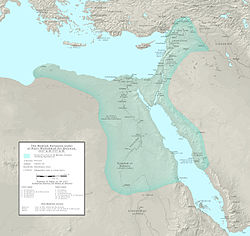Egyptian Mamluks
| Mamluk Sultanate of Egypt | ||||||||||||||||||
|
سلطنة المماليك Salṭanat al-Mamālīk Memlûk Sultanlığı ed-Devletü't-Türkiyye |
||||||||||||||||||
|
||||||||||||||||||
|
Flag
|
||||||||||||||||||
|
Extent of the Mamluk Sultanate under Sultan an-Nasir Muhammad
|
||||||||||||||||||
| Capital | Cairo (1250–1517) | |||||||||||||||||
| Languages | ||||||||||||||||||
| Religion |
Sunni Islam Shia Islam |
|||||||||||||||||
| Government | Monarchy | |||||||||||||||||
| Sultan | ||||||||||||||||||
| • | 1250 | Shajar ad-Durr | ||||||||||||||||
| • | 1250–1257 | Izz al-Din Aybak | ||||||||||||||||
| • | 1260–1277 | Baibars | ||||||||||||||||
| • | 1516–1517 | Tuman bay II | ||||||||||||||||
| History | ||||||||||||||||||
| • | Murder of Turanshah | 2 May 1250 | ||||||||||||||||
| • | Second Ottoman–Mamluk War | 22 January 1517 | ||||||||||||||||
|
||||||||||||||||||
| Today part of | ||||||||||||||||||
in Anatolia
Artuqid dynasty
Saltuqid dynasty
in Azerbaijan
Ahmadili dynasty
Ildenizid dynasty
in Egypt
Tulunid dynasty
Ikhshidid dynasty
in Fars
Salghurid dynasty
in The Levant
Burid dynasty
Zengid dynasty
in Yemen
Rasulid dynasty
The Mamluk Sultanate (Arabic: سلطنة المماليك Salṭanat al-Mamālīk) was a medieval realm spanning Egypt, the Levant, and Hejaz. It lasted from the overthrow of the Ayyubid dynasty until the Ottoman conquest of Egypt in 1517. Historians have traditionally broken the era of Mamlūk rule into two periods—one covering 1250–1382, the other, 1382–1517. Western historians call the former the "Baḥrī" period and the latter the "Burjī" due to the political dominance of the regimes known by these names during the respective eras. Contemporary Muslim historians refer to the same divisions as the "Turkish" and "Circassian" periods in order to stress the change in the ethnic origins of the majority of Mamlūks.
The Mamlūk state reached its height under Turkic rule with Arabic culture and then fell into a prolonged phase of decline under the Circassians. The sultanate's ruling caste was composed of Mamluks, soldiers of predominantly Cuman-Kipchaks (from Crimea), Circassian, Abkhazian,Oghuz Turks and Georgian slave origin. While Mamluks were purchased, their status was above ordinary slaves, who were not allowed to carry weapons or perform certain tasks. Mamluks were considered to be "true lords", with social status above citizens of Egypt. Though it declined towards the end of its existence, at its height the sultanate represented the zenith of medieval Egyptian and Levantine political, economic, and cultural glory in the Islamic era.
...
Wikipedia


